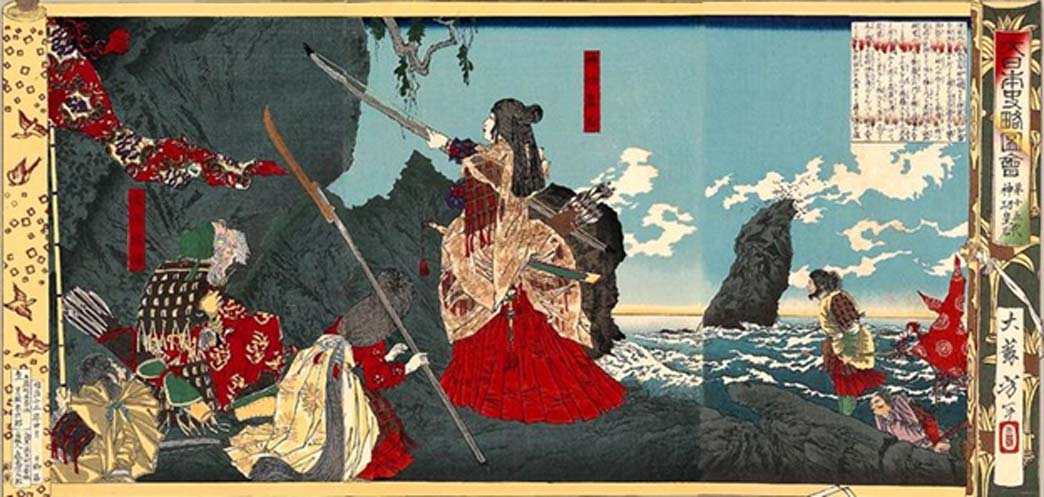
Art of War: Onna Bugeisha of Japan and the Ancient Female Warrior Culture
The idea since ancient times that it was men solely who were engaged in war is so common that it has become somewhat of a cliché. The vision of heavily armed men has become so associated with the art of war that—despite the evidence throughout history of many female fighters, strategists and leaders—the association between women and war is still mostly seen as somewhat of a novelty even to this day.
Many stories of ancient female warriors are relegated to legends and folklores with minimal historical accounts attached to their lives, which leads to doubts on whether these women actually existed. The lives and exploits of notable warrior women in history such as Artemisia I of Caria, Boudicca, or Joan of Arc are mostly considered examples of exceptional personal valor instead of reflections of the societies in which they lived.
However, a look into onna bugeisha (“women who practiced the art of war”) in Japan tells us that the culture of female warriors were, in fact, a more common occurrence than we know. The employment of women in warfare is generally caused by a society’s acknowledgement of women’s combat potential and willingness to utilize them in war. For this, that society needs to recognize the presence of a combat role that can be effectively filled by the women. Another factor is the appearance of circumstances which require complete mobilization of all members of a community – men and women. Onna bugeisha were women who were trained and fought as recognized combat components in their society rather than exceptions to their contemporary military arrangement.
Understanding Onna Bugeisha: The Real Women behind the War Chronicles
However, one cannot readily be informed of all this by relying on ancient chronicles alone. Chronicles of the ancient wars in Japan, much like those of ancient Greece and Rome, present many different kinds of male warriors such as the tragic hero, the warrior-courtier, the traitor, the coward and many others. On the other hand, women's roles in these tales are slight and set far from the battlefields.
There is the tragic heroine, or the loyal wife, who kills herself at the death of her husband or lover, the grieving mother who grooms her son to avenge his father's death, the merciful woman who encourages a warrior chieftain to empathize, against his better judgment, and dissuade him from slaughtering his enemy's children who later grow up to kill him, and the seductress who diverts the warrior from his task with her feminine wiles— all intriguing roles, of course, but they are stereotypes which realistically would apply to only very few women.
- Ng Mui - The Nun Who Invented the Martial Arts Wing Chun
- The Maiden of France: Joan of Arc and the Siege of Orléans
- Woman buried with weapons is first evidence of female warriors among the Kangyuy people of Kazakhstan
Then there are the “ordinary women” who are either slaughtered or taken by the warriors as spoils of war. The fates of these women were rarely, if ever, mentioned. The likelihood of these women being raped and murdered was considered such a matter of course that frequent references to them would only disturb the flow of the story. However, long before the existence of the established samurai class, Japanese history was dominated by women trained in martial arts and highly educated in science, mathematics, and literature.
The rare female warriors were depicted as superheroines. The life of Empress Jingu (c. 169-269 CE), as with many ancient female warriors, was shrouded in mystery. According to legends, aided by a pair of divine jewels which allowed her to control the tides, Empress Jingu led a successful invasion to Korea without shedding a single drop of blood from the Korean or the Japanese.

Empress Jingu setting foot in Korea. 1880 Yoshitoshi painting. (Public Domain)
However, the belief that Korea was invaded during this time is widely rejected historically as the historical evidence of Japanese rule in Korea during this time are somewhat debatable. Her legend became more incredible as her son Ojin was born upon her return to Japan in 203 CE. Ojin remained in the Empress’ womb for three years as he was conceived before she went to battle and was born upon her return. Legend has it that Ojin was actually Hachiman, the god of war, and he remained in her womb for three years to give her the time she needed to conquer Korea.




